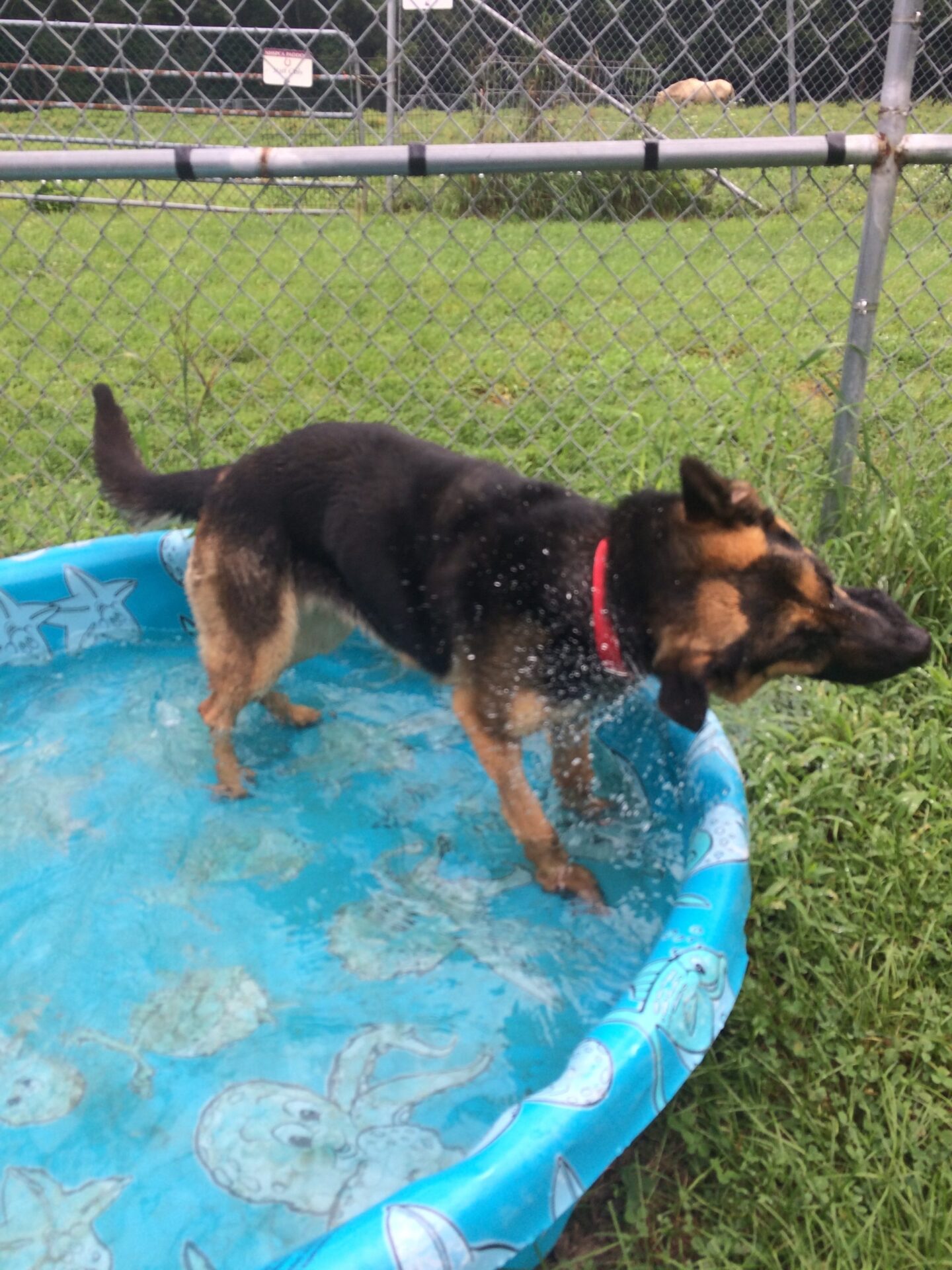Kennel Enrichment Program
Living in a shelter can be stressful for animals. And animals under stress are vulnerable to physical and behavioral issues. We see these often: gastro intestinal problems, compulsive behaviors, fear or aggression, to name a few. But there is help.
At the New Hampshire SPCA, we have an enrichment program aimed at keeping our animals stimulated, active and less prone to succumb to the vagaries of long-term kennel life. Studies show that enrichment practices mitigate the development of problematic behaviors and contribute to the overall well-being of animals in a shelter.
Every day we use different methods to help the animals in different and important ways:
- Olfactory Stimulation
Animals have an acute sense of smell that we stimulate multiple times a day. We spritz novel species-specific calming scents into the air. For predatory species, such as dogs and cats, we also rotate daily toys infused with different prey scents.
- Auditory Stimulation
Research indicates that certain types of music can be relaxing for animals: audiobooks, bird chirping sounds, white noise and species-specific music designed for stress reduction. These sounds are played during daytime hours. The music is turned off at night to ensure a quiet environment for a normal sleep pattern.
- Visual Stimulation
This sense is stimulated a lot in the shelter environment — sometimes too much. Dogs who overreact at the sight of other dogs are moved to a more quiet spot or a sheet is hung on their kennel door. Cats scared by their surroundings also get a privacy curtain. For other animals, when available, we provide visual access to television or to the outdoor environment.
- Tactile Stimulation
Many animals respond positively to being touched by humans. We work to understand the kind of touch an animal needs and wants and act accordingly by petting, brushing or massaging. Animals who like this also enjoy the social aspect of physically connecting with a human.
- Taste Stimulation
Just as humans like a variety of foods, so do many animals. And just as many of us give our own animals special treats, we do the same for our shelter guests. Besides regular diets tailored to their needs, we provide novel edible items such as frozen dog treats, ice cubes made of beef or chicken broth with added tidbits or smears of squirt cheese or peanut butter. These treats are given every night. Besides making the animals happy, we also are providing outlets for chewing and shredding.
- Mental Stimulation
All animals need to keep their minds active. It’s more challenging to accomplish this in a shelter environment, but we do work to keep animals mentally busy and to encourage the expression of normal species behaviors.
Some of our methods include:
- Adding novel toys to the kennels every day to promote an animal’s investigation and self-engagement.
- We provide opportunities for foraging to stimulate animals’ natural “seeking” sense.
- We use clicker training with cats, dogs and pigs. Desired behaviors are marked with a click and rewarded. This helps animals think and learn and gain a sense of control, something typically lacking in a shelter environment. This technique is used for target training, trick training and manners training.
- We provide feeding enrichment by presenting animals’ meals in ways that encourage them to work for their food. Not only do animals get a chance to engage in natural foraging behaviors, they also get great mental exercise as they problem-solve and try to figure out how to obtain their food from feeding toys.
- Physical Stimulation
When animals live in a restricted environment, it is critical to give them opportunities to move. Dogs are walked twice a day and given extra pen time at midday to explore, chase balls or simply enjoy human contact.
- Play Stimulation
Play is the best way to keep animals upbeat, so each shelter dog and cat enjoys a play session several times a week and whenever (s)he looks depressed.
- Social Stimulation
Pets are social animals. Except for those who fear people, they need the chance to interact with humans every day. Staff and volunteers offer simple companionship (“quiet time,” petting, grooming or massaging the animal) or more active engagement, such as play, exercise or reward-based training. Social interaction with other animals is provided to those who enjoy the company of others. Staff and trained volunteers take dogs for walks in pairs or groups, or conduct supervised playgroups.
Enrichment programs are designed to allow animals to express normal behaviors while in a shelter. Besides reducing stress, enrichment enhances our animals’ adoptability. Still, animal shelters are not intended for long-term stays. Animals benefit from enrichment, to be sure. But the longer an animal stays in a shelter, the more prone (s)he is to experiencing boredom, loneliness and anxiety. That’s why finding good homes as soon as possible is key.













